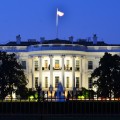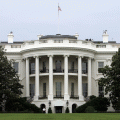The Federal Reserve’s broad power to hand out money to shore up failing financial institutions just became more limited. A newly passed rule puts restrictions on which firms the Fed can help out of crisis.
Inspired by the 2010 Dodd-Frank Act, the rule aims to restrict the Fed from providing emergency loans to firms that are deemed insolvent. While critics say loopholes remain, the Fed’s board approved the rule in late November, paving the way for a Jan. 1, 2016, effective date.
The Dodd-Frank Act was put into place to deliver sweeping financial reforms in hopes of preventing another Great Recession. The act was designed to improve the country’s financial stability by introducing new regulations on the banking industry while protecting consumers from abusive financial practices. It also aims to put an end to taxpayer bailouts and the concept that some firms are just too big to fail.
While the act passed in 2010 and was signed into law that July, the Fed’s sweeping powers to make emergency loans to entities of its choosing remained largely in place. But under the rule, insolvent firms are no longer eligible for emergency loans.
You Might Also Enjoy: Strong U.S. Labor Market Points to Rate Hike in December
The rule also is designed to prevent the Fed from creating an emergency loan program to bailout a single firm. In order for an emergency program to be established, there must now be at least five firms deemed eligible to borrow. That essentially means a too-big-to-fail bailout, such as the one structured for American International Group (AIG) following the 2008 crisis, would now be considered illegal.
For financially troubled companies, the new rule could mean an end to obtaining easy government bailouts. Firms must now make an effort to prove their solvency in order to gain funding. While some critics say that’s a difficult concept to determine, the rule makes attempts to define insolvency; one marker is a firm’s failure to pay undisputed debts for 90 days. The rule also prohibits solvent entities from borrowing money to lend to entities deemed insolvent.
While the new rule does limit the Fed somewhat, critics say it doesn’t go far enough. U.S. Sen. Elizabeth Warrant seems to agree. She’s been quoted as saying loopholes that could allow a “backdoor bailout” still remain despite the rule’s passage.
“It’s up to Congress to close those loopholes,” Warren told the New York Times. Whether that will happen remains to be seen.






